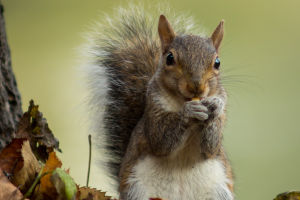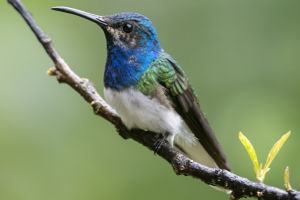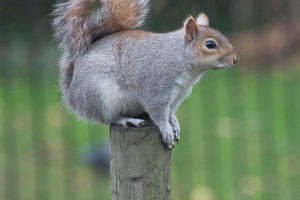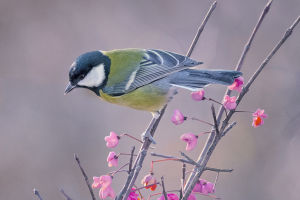
Nature's Rhythmic Artisans

In the depths of dense forests, a singular bird stands out for its unique rhythm and industrious labor: the woodpecker.
These avian artisans of rhythm engage with their environment and fellow creatures in distinctive ways.
Yet, our perception often fixates solely on the resounding echoes of their tapping against trees. In this article, we shall embark on a journey into the life of woodpeckers, unraveling their significance within the ecosystem and uncovering their mastery of nature's cadence.
The tale of woodpeckers extends far beyond the mere percussion of wood. These diminutive beings play pivotal roles within ecosystems, curbing tree populations and influencing the survival and reproduction of other fauna.
Related
 It’s really hard to imagine how small animals like squirrels can store so much food and survive in the winter.
It’s really hard to imagine how small animals like squirrels can store so much food and survive in the winter.
 Snow hares adapt to winter by changing fur color, but climate change puts them in danger.
Snow hares adapt to winter by changing fur color, but climate change puts them in danger.
 Whales, mysterious giants of the ocean, astound with their prolonged underwater stays. Delve into their secrets of survival.
Whales, mysterious giants of the ocean, astound with their prolonged underwater stays. Delve into their secrets of survival.
 Female hummingbirds mimic males to reduce harassment and improve feeding efficiency.
Female hummingbirds mimic males to reduce harassment and improve feeding efficiency.
 Squirrels utilize memory and spatial perception to effectively store and locate food.
Squirrels utilize memory and spatial perception to effectively store and locate food.
 Bird aggregation aids survival through protection, confusion, and energy efficiency in nature.
Bird aggregation aids survival through protection, confusion, and energy efficiency in nature.
Woodpeckers prey upon pests such as ants, bees, and beetles when foraging. This predatory behavior serves to preserve the equilibrium of forest ecosystems, thwarting pest overpopulation and safeguarding the health and vitality of vegetation.
Thus, woodpeckers emerge as the silent sentinels of ecological harmony, silently contributing to the verdant tapestry of the forest.
Beyond their ecological significance, woodpeckers exhibit remarkable adaptability and ingenuity. While their specialized mouth and neck musculature are tailored for tree pecking, their repertoire extends further.
Woodpeckers possess an innate ability to discern suitable trees and wooden structures across diverse habitats for nest construction. Some opt for hollow trees, employing their pecking prowess to carve out snug abodes, while others utilize tree cavities within rocks or soil.
This nest-building endeavor showcases the woodpeckers' acumen and finesse and provides sanctuaries for their progeny.

Notably, the rhythmic tapping of woodpeckers transcends mere utility; it serves as a medium for socialization and communication. Typically emanating from males, the percussive beats function as courtship displays or territorial assertions.
Varied woodpecker species exhibit distinct tapping rhythms and frequencies, fostering communication and delineating community social structures.
Thus, the rhythmic symphony of woodpeckers epitomizes survival tactics and sophisticated social behaviors, underscoring their evolved social cognizance and communicative prowess.
Nevertheless, the burgeoning specter of human encroachment presents formidable challenges to woodpecker survival. Deforestation and habitat destruction have encroached upon woodpecker habitats, imperiling their existence.
Furthermore, urbanization and industrialization engender noise pollution, disrupting woodpecker communication and breeding behaviors.
Consequently, safeguarding woodpecker habitats and preserving habitat integrity and stability are imperative imperatives in pursuing biodiversity conservation and ecological equilibrium.
Amidst these trials, it behooves us to deepen our appreciation for the woodpecker's uniqueness. These avian denizens comprise integral constituents of forest ecosystems and epitomize the marvels of terrestrial life.
Woodpeckers illuminate the boundless allure and enigma of the natural world through their diligence, adaptability, and creativity. Let us unite to shield these endearing creatures, coexisting harmoniously with them upon this wondrous and diverse planet.